Swordfish Vs. Marlin: Why These Two Fish Aren’t The Same
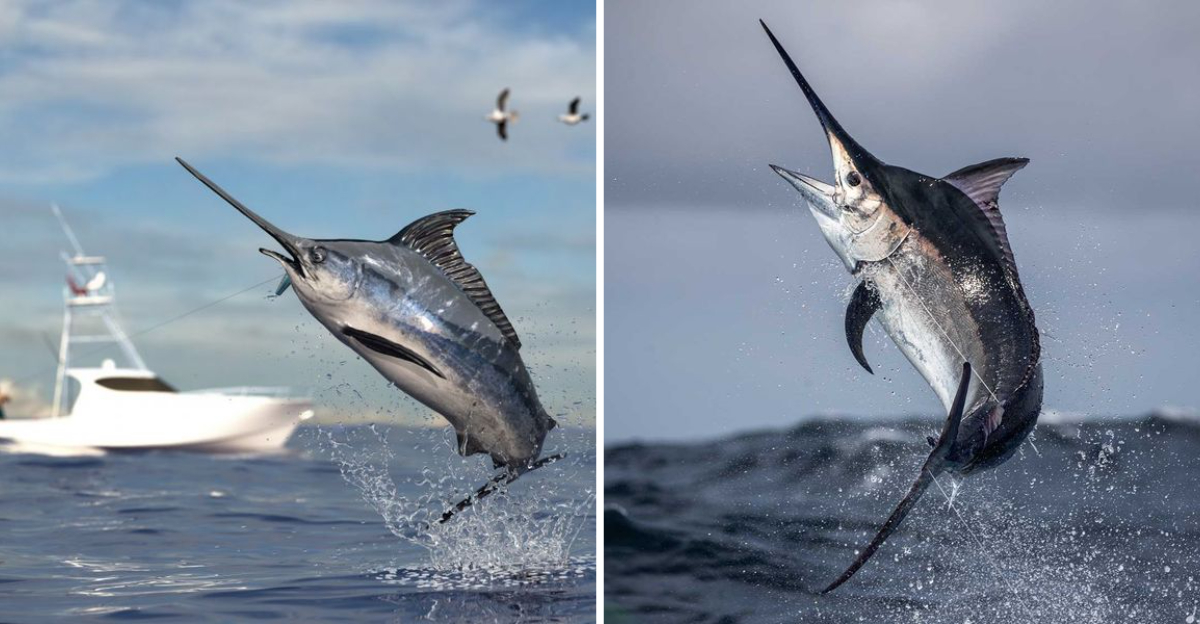
Ever mistaken a swordfish for a marlin or vice versa? You’re not alone! These powerful ocean predators look similar at first glance, but they’re actually quite different creatures.
Both are prized by fishermen and make for exciting catches, but knowing what sets them apart can make you sound like a real fishing expert. Let’s explore the key differences between these magnificent oceanic species.
1. Bill Shape Tells The Story

Swordfish have flat, blade-like bills that resemble – you guessed it – actual swords. They’re broad, sharp on the edges, and perfect for slashing through schools of prey fish. This distinctive weapon gives them their name!
Marlins, however, sport round, spear-like bills that taper to a point. Their bills are more like natural javelins, designed for stabbing and impaling prey rather than slashing. This fundamental difference is often the easiest way to tell these fish apart when you spot them.
2. Dorsal Fin Differences
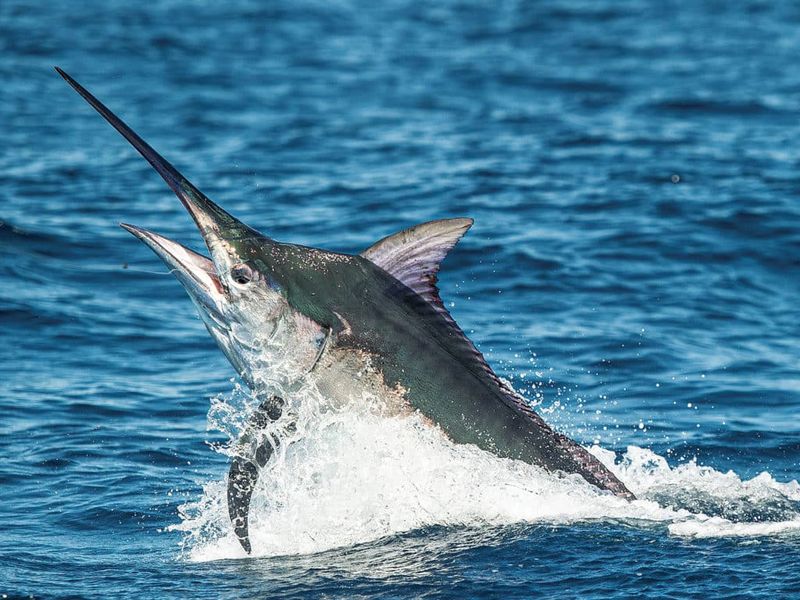
The dorsal fin on a swordfish is single and crescent-shaped, rising up and then tapering down along the back. Once they reach adulthood, swordfish lose their lengthy juvenile dorsal fin for this more streamlined version.
Marlins show off dramatically different dorsal fins that look like tall, pointed sails. These sail-like fins run nearly the entire length of their backs. When a marlin gets excited or hunts, it might even raise this impressive fin above the water’s surface, creating that classic silhouette fishermen dream about.
3. Pelvic Fins? Only One Has Them
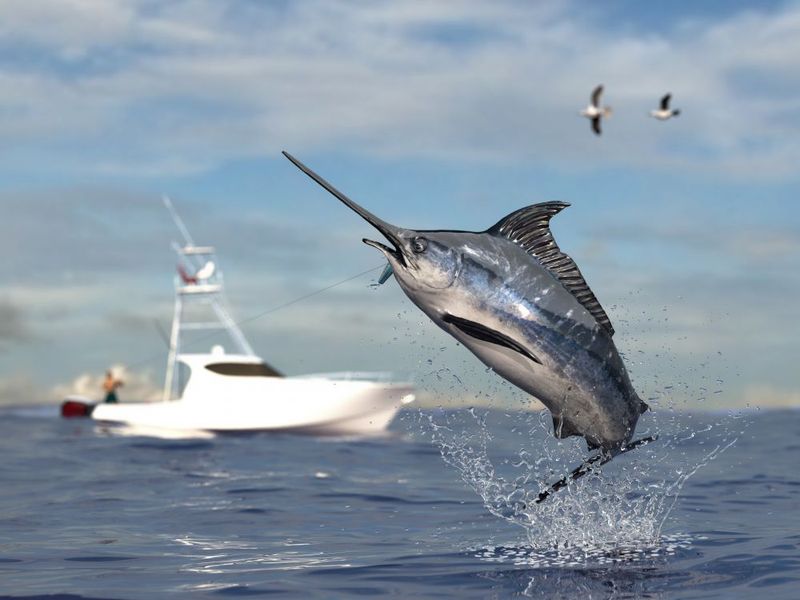
Look closely at a swordfish and you’ll notice something missing – pelvic fins! Adult swordfish completely lack these fins, which contributes to their sleek, streamlined appearance as they zoom through the water.
Marlins proudly display their pelvic fins, which look like two long, narrow appendages extending from their belly area. These fins help with stability and precise movements during high-speed chases and hunting maneuvers. This clear anatomical difference provides another easy way to distinguish between these two ocean speedsters.
4. Color Patterns Stand Apart
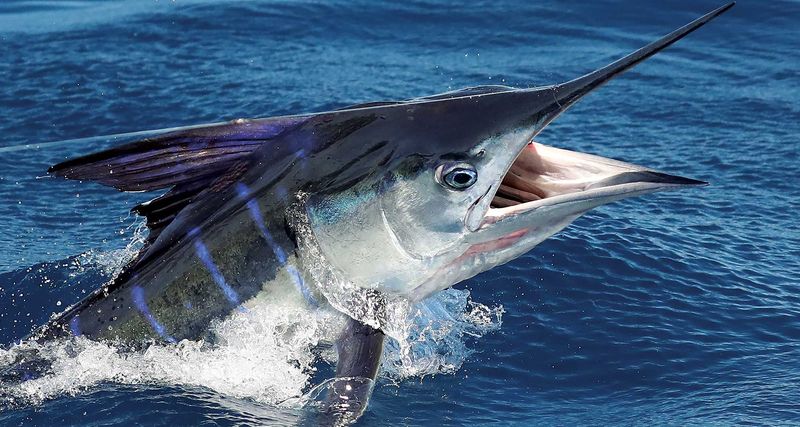
Swordfish typically display a brownish-black coloration on top that fades to a light silver-white on their bellies. Their color pattern is relatively simple and consistent, without much variation or distinctive markings.
Marlins are the fashion models of the deep! They showcase vibrant blue-black tops with silvery-white undersides, but the real showstopper is their stunning vertical stripes. These stripes might be blue, cobalt, or even light purple depending on the species and can light up when the fish gets excited during hunting or fighting.
5. Swimming Speed Champions
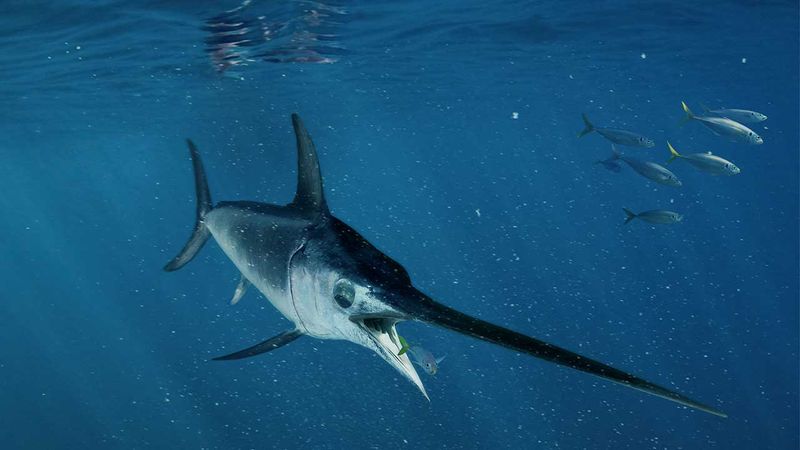
Swordfish are among the fastest fish in the ocean, capable of bursts up to 60 mph! This incredible speed helps them chase down prey and escape from larger predators like sharks.
Marlins might just be the Usain Bolts of the sea, with recorded speeds reaching an astonishing 68 mph. Blue marlins in particular are renowned for their explosive acceleration and sustained high-speed swimming. Their incredible velocity, combined with their spear-like bill, makes them formidable hunters as they charge through schools of fish.
6. Size Champions Differ
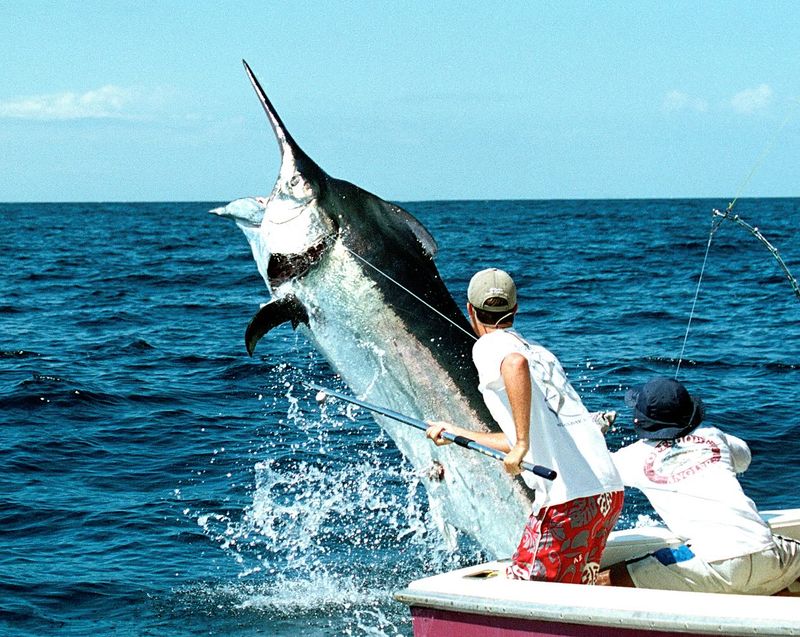
Swordfish grow impressively large, with average adults measuring 9 feet long and weighing around 200-400 pounds. The record-holder tipped the scales at a whopping 1,400 pounds – that’s heavier than a grand piano!
Black marlins claim the size crown among the marlin family, with some monsters reaching over 16 feet long and weighing more than 1,500 pounds. Blue marlins typically grow to 11 feet and 400-600 pounds. White and striped marlins are smaller but still impressive, usually weighing between 100-200 pounds.
7. Different Family Trees
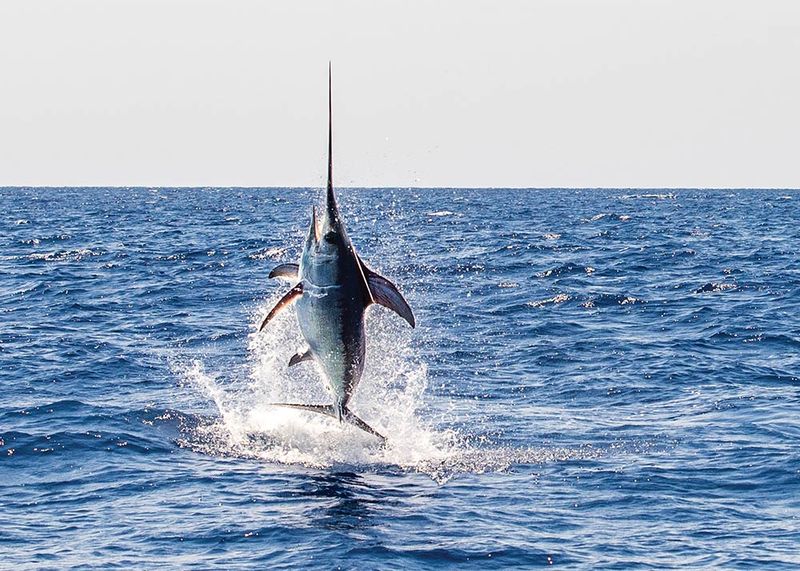
Swordfish stand alone in their own family called Xiphiidae, with just one living species worldwide – the swordfish (Xiphias gladius). They’re truly one-of-a-kind creatures in today’s oceans!
Marlins belong to the Istiophoridae family, which includes about 10 different species. Blue marlins, black marlins, white marlins, and striped marlins are all distinct species within this diverse family. They share this family tree with their close relatives, the sailfish and spearfish, forming a group of billfish with similar features.
8. Teeth Tell Different Tales

Adult swordfish completely lack teeth! Young swordfish have tiny, sand-paper like teeth, but these disappear as they mature. Instead, they rely on their powerful bills to stun or slash prey before swallowing it whole.
Marlins keep their teeth throughout their lives. Their mouths contain rows of small, file-like teeth perfect for gripping slippery prey. These teeth aren’t large or particularly sharp, but they’re extremely effective for holding onto fish once they’ve been speared by the marlin’s bill.
9. Hunting Styles Vary
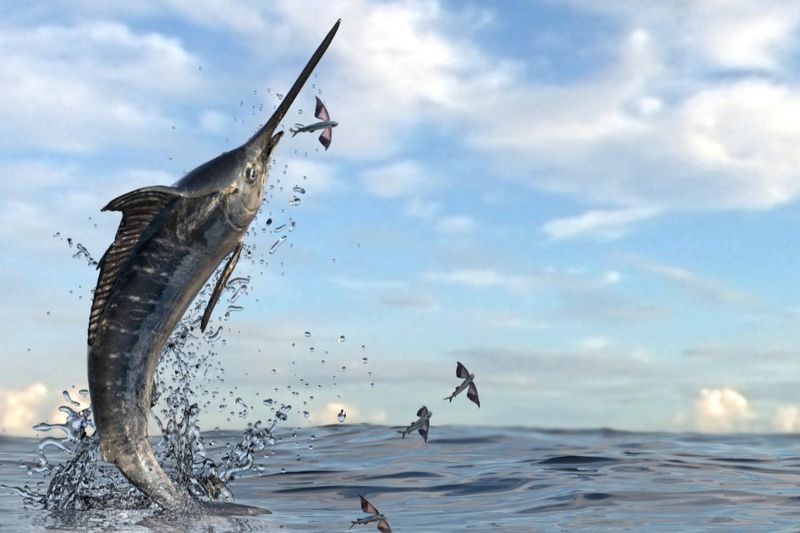
Swordfish employ a unique slashing technique to hunt. They’ll swim through schools of fish, whipping their bills side to side like actual swords, stunning or injuring multiple prey at once. Then they circle back to gobble up the wounded fish.
Marlins are precision hunters that use their bills like spears. They’ll charge at high speed into a school of fish and impale individual prey on their pointed bills. Sometimes they even leap into the air with fish still stuck on their bills! They’ll then shake their heads to slide the fish off and into their mouths.
10. Habitat Preferences
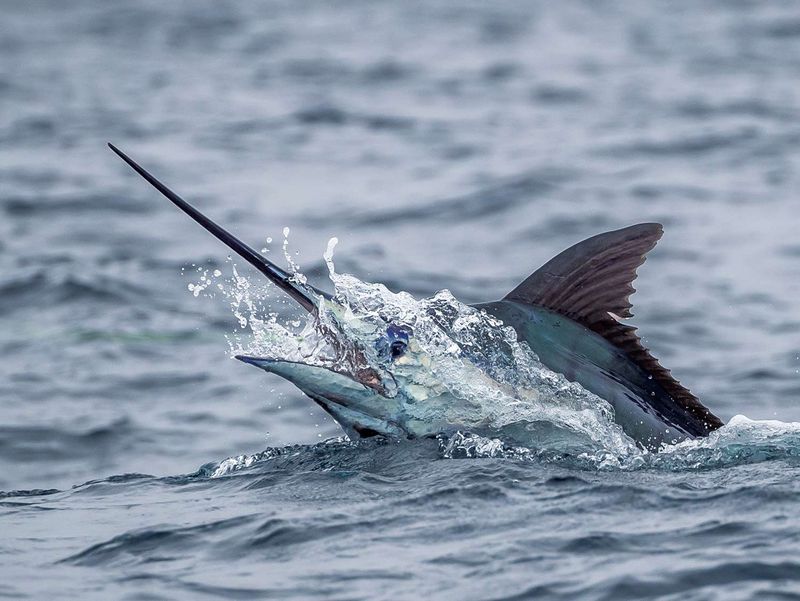
Swordfish prefer cooler, deeper waters and often dive to impressive depths exceeding 1,800 feet. They’re incredible at regulating their body temperature, which allows them to hunt in cold, deep waters where their prey has nowhere to hide.
Marlins generally stick to warmer, tropical, and subtropical surface waters. While they can dive deep when hunting, they typically spend more time in the upper layers of the ocean where temperatures are higher. Blue marlins in particular are known for their preference for the warm blue waters that match their beautiful coloration.
11. Migration Patterns Differ
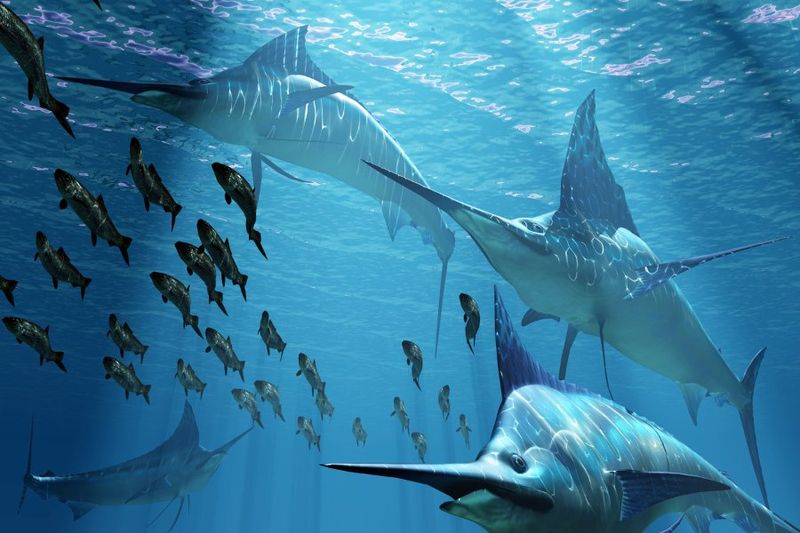
Swordfish are long-distance travelers that follow seasonal temperature changes. They move toward cooler waters in summer and warmer waters in winter, sometimes traveling thousands of miles annually between feeding and spawning grounds.
Marlins stick closer to the equator and tropical regions year-round. While they do migrate, their movements are generally less extreme than swordfish. Different marlin species have their own preferred regions – blue marlins favor the Atlantic, while black marlins are more common in the Pacific and Indian Oceans.
12. Taste And Culinary Uses

Swordfish steaks offer a mild, slightly sweet flavor with a firm, meaty texture that’s often compared to chicken or veal. Their high oil content gives them a moist, rich quality that stands up beautifully to grilling and high-heat cooking methods.
Marlin meat tends to be stronger-flavored and can have a more pronounced “fishy” taste compared to swordfish. The flesh is typically darker in color – ranging from pink to reddish-brown – and slightly drier. In Hawaii, marlin is often served as poke, while in Japan, it might appear in sashimi dishes under the name “kajiki.”






